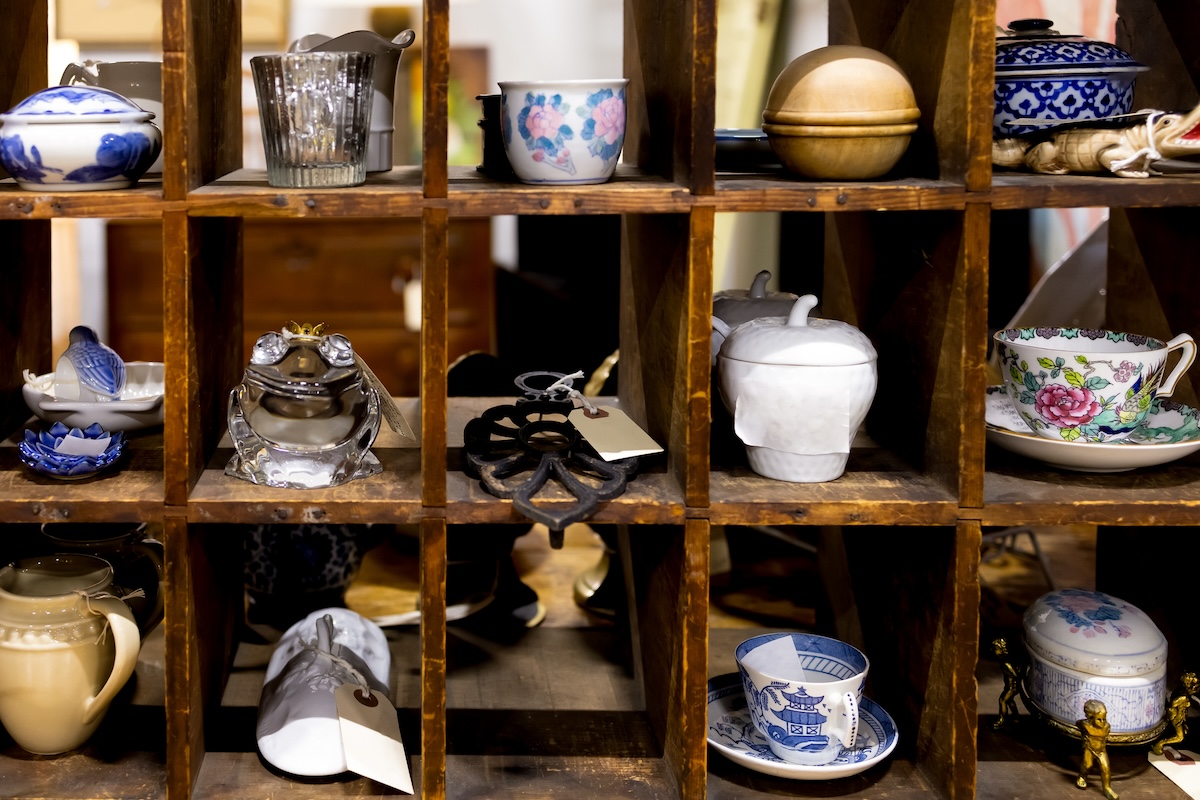We may earn revenue from the products available on this page and participate in affiliate programs. Learn More ›
Strapped for time or just not a fan of driving around town making multiple stops at stores to shop for home goods, gifts, holiday décor, and entertaining essentials? Or maybe you have sticker shock and are concerned about breaking the bank this holiday season. Shopping in person for new items is no longer required to find what you’re looking for at an affordable price.
The secondhand marketplace is thriving, as more people look for unique buys at low price points but also have sustainability in mind. According to OfferUp’s 2024 Recommerce Report, the recommerce market is expected to grow 55 percent by 2029, reaching $291.6 billion, with resale accounting for 8 percent of total retail by then.
Much of the surge in recommerce has to do with the change in perception of purchasing secondhand. The report found that 72 percent of shoppers believe the stigma around secondhand shopping has decreased. In fact, 63 percent of people say they admire those who prioritize secondhand items over new ones. And more than half of shoppers consider secondhand shopping an enjoyable hobby, with nearly 60 percent saying that it’s even more enjoyable than buying new items.
“In our company, we’ve always been big proponents of incorporating secondhand pieces into interiors,” says Reilly James, marketing manager and e-commerce optimization expert at William Morris Wallpaper in New York City. “The advantages of shopping secondhand are quite multifaceted, encompassing cost savings, environmental responsibility, and the unique charm of vintage finds.” He also believes that secondhand marketplaces enrich the aesthetic value of any space.
1. Cost Savings
One of the most compelling reasons for shopping secondhand marketplaces is finding the same items for a fraction of the price in other stores, whether that be used furniture, electronics, home décor, or other products. These savings add up over time, especially when you opt for secondhand choices for big-ticket items like a sofa or big-screen TV.
“Secondhand shopping offers substantial savings, with items typically priced 50 to 75 percent below retail,” says James. This price reduction allows you to have more flexibility when decorating your home, as well as the ability to update interiors more frequently without financial worry. “Most consumers have reported saving an average of about 60 percent on furnishing their spaces by opting for secondhand finds—giving them the chance to allocate funds to other design aspects,” he says.
The high costs of raw materials and shipping can inhibit people from finding well-made, well-designed, high-quality furniture and other products at affordable prices, says Melissa M. Lubin, owner and business consultant and coach at Goods to Great and former owner of a home décor business. “Secondhand vintage or antique furniture is almost always made with solid wood and costs less than buying new furniture. Effectively, you pay less for higher quality goods. A win-win in my book,” she says.

2. Supporting Sustainability
Purchasing from secondhand marketplaces benefits the environment by reducing waste, preserving natural resources, cutting energy use, and lowering our carbon footprint.
“Opting for secondhand items drastically cuts environmental impact,” says James. “Reusing furniture diverts waste from landfills—important given that furniture contributes to millions of tons of waste each year—and lessens the demand for new materials. Our clients have embraced this sustainable choice, contributing to a reduction in their carbon footprint related to new furniture purchases.”
When we buy used goods, we prevent the need to manufacture as many new products, which in turn reduces the consumption of raw materials, energy, and water while decreasing emissions. Each secondhand purchase creates a ripple effect—it diverts one item from the waste stream and eliminates the packaging, shipping materials, and eventual disposal costs associated with buying new.
Finally, the more people who purchase secondhand, the more society will shift to a sustainable mindset in which production and consumption aim to reduce waste and extend the life of products and materials vs. emphasis on a throwaway culture.
3. Unique, Quality Purchases
Another advantage of buying secondhand is that you can find unique, high-quality products that have stood the test of time. “When you think about quality home décor, secondhand shopping is a surprisingly rewarding path,” says Miriam Joy Macalanda, editor-in-chief at Best Hardware Supply in Smithtown, New York. “Unlike brand-new, mass-produced items, secondhand pieces often come with craftsmanship. And older items were often built to last, using materials and techniques that have more character and durability than today’s fast-made alternatives,” she says.
Special items that can be found in secondhand marketplaces often come with a sense of history. “Each piece carries a story that a brand-new item just can’t replicate,” says Macalanda. “It’s a refreshing approach to furnishing your home with charm and quality, all while often spending a fraction of what you’d pay for new.”

Our Favorite Secondhand Marketplaces
Here are some of our favorite secondhand marketplaces and apps for finding furniture, home décor, gifts, holiday décor, entertaining essentials, and more during the holiday season and beyond:
Kitchen Switchen: Designed with sustainability in mind, this marketplace for buying and selling high-quality secondhand kitchenware provides a wide range of pre-loved kitchen items, from elegant cookware to practical utensils. This online platform connects shoppers with those looking to sell gently used kitchenware.
Chairish: Awarded Newsweek‘s “Best Online Shop” of 2021 and USA Today Reader’s Choice Award for “Best Place to Shop Online for Furniture and Home Décor,” this online platform connects more than 12,000 small businesses, practicing artists, and makers with design lovers from around the world. Sustainability is a major goal, with 85 percent of the inventory being vintage.
AptDeco: This site is for buying and selling secondhand furniture online. Unlike other peer-to-peer sites, AptDeco takes over once you make a purchase, handling both payment and delivery. They also promise inspections of products upon pickup and a money-back guarantee if your item isn’t as described.
1stDibs: This online marketplace connects consumers to more than 1 million pieces, including vintage, antique, and contemporary furniture; home décor; art; fine jewelry; and clothing. The site features listings from a worldwide network of vetted, trusted sellers, and shoppers can buy directly or negotiate a price through the interactive platform.
Everything But The House: This website/app is touted as a full-service selling solution for home or business-minded consignors. The global marketplace makes shopping and selling pre-owned items simpler via a suite of easy-to-use technology. It relies on an action-based approach so people can find secondhand goods, many of which are rare, antique, or from estate sales. All bids start at just $1.


